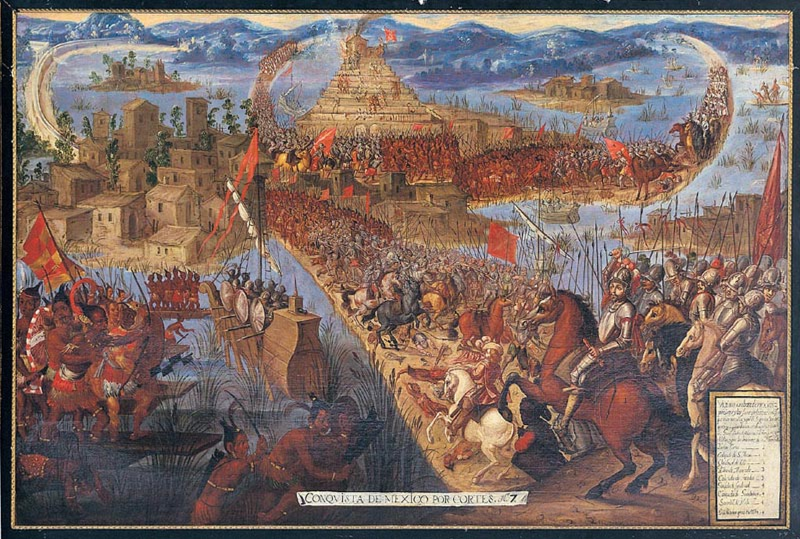Chapter 18 - Von Sivers Dashboard Image Analysis

The Capture of Tenochtitlán
Painted about 150 years after the events it depicts, this painting is part of a series of eight canvasses that tell the story of the 1521 Spanish conquest of the Aztecs. Most likely intended for King Charles II of Spain (r. 1665-1700), each painting in the series follows a traditional formula for seventeenth-century Spanish battle paintings in which large figures, often on horseback, are highlighted in the foreground, with the actual conflict occurring in the background. As is typical of such works, each painting is not limited to one moment. Instead, a series of events are compressed onto a single canvas.
The Capture of Tenochtitlán shows of how the Spanish mythologized the conquest of Mexico. Hernan Cortés is the focal point of the painting, leading his Spanish armies on horseback on one of the causeways across Lake Texcoco that connected the city to the mainland. Nearly everything in the painting is depicted inaccurately. Tenochtitlán is portrayed as a European city. The Spanish gunboat on Lake Texcoco looks more like a European galleon than the far simpler watercraft used by the attackers. The Spanish soldiers are shown wearing metal armor but they usually preferred the native cotton armor which was lighter and more suited to the tropical climate and high altitude of Mexico. Most significant, the painting makes it appear that the Spanish led the attack, when in fact their allies, the Tlaxcala, undoubtedly played the leading role in the operation.
Source: Second half of the seventeenth century. Oil on canvas. Jay I. Kislak Collection, Rare Book and Special Collections Division, Library of Congress